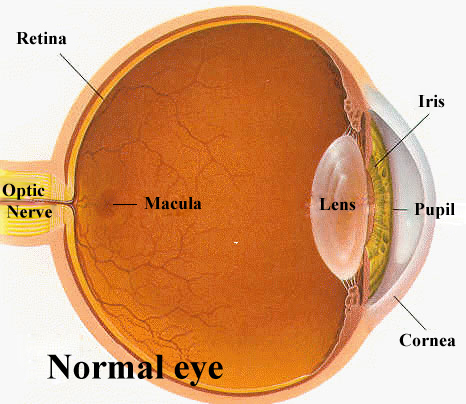
Introduction
The eye (figure 2) has an almost spherical shape. Its function is threefold: collecting light, forming an image of the observed scene, and processing the information. These tasks are realized thanks to only a few key elements:
A transparent and resistant membrane acting as a protective barrier between the ocular globe and the outside world. The greatest refraction of light occurs at the corneal surface because at the transition between air and tissue the difference in refractive index is the greatest.
The colored ring around the pupil. The pupil regulates the flux of light entering the eye.
A thin membrane on the back of the eye, on which images are created. It contains two types of photoreceptors: cones ( photopic or daily vision) and rods (scotopic or night vision).
Also called the yellow spot, it contains a small pit in its center called the fovea, of about 1,5 mm in diameter, corresponding to a vision angle of 5°. At the center of the fovea, a 400-µm-in-diameter zone (corresponding to a vision angle of 1.3°), the fovea centralis, contains only cones which are thinner and closer to each other. This latter zone corresponds to the area where the visual acuity is maximum.
The optic nerve conveys the information to the brain, through the lateral geniculate nucleus, located in the thalamus, which plays the role of a signal amplifier.
